The Magic of Our Refinery
You are here
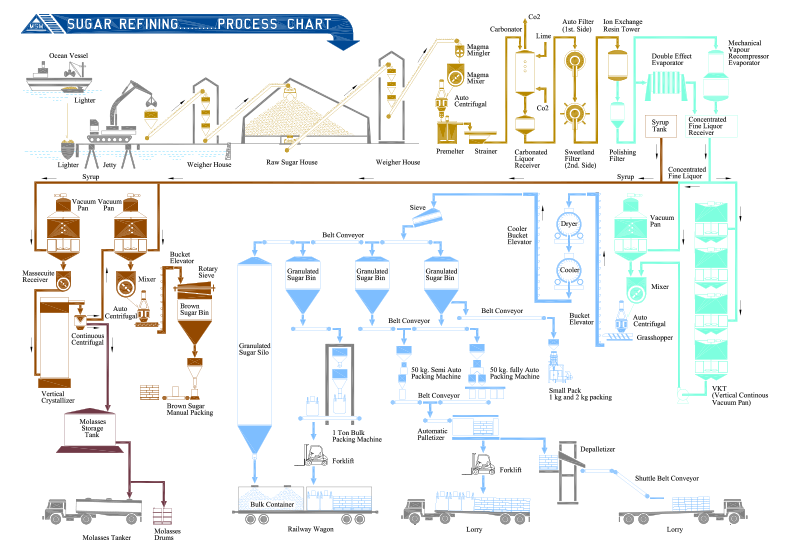
The major stages of refining operations for MSM Perlis are described below.
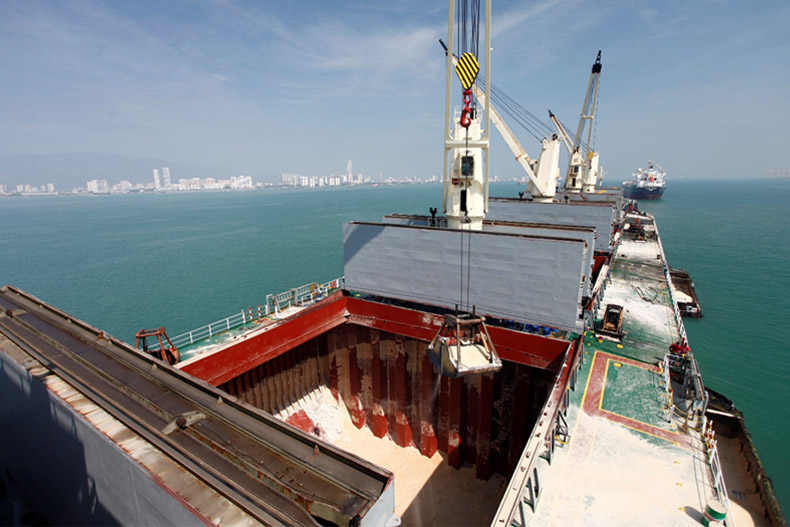
Raw sugar delivered by ocean vessels is transferred to lighters and brought to MSM jetty. A crane and excavator equipped with grab buckets are used to unload raw sugar from the lighters onto belt conveyors. The conveyors transport the sugar to a weigher for weighing before unloading the sugar in the warehouse for storage. Kindly refer diagram below.
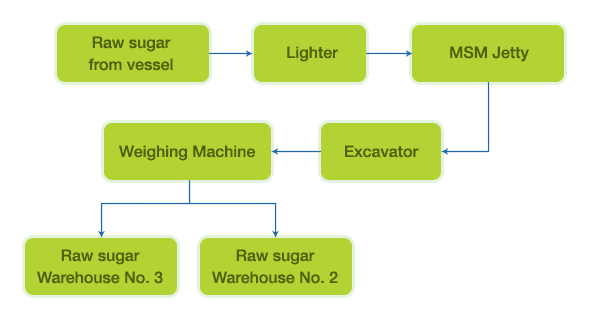
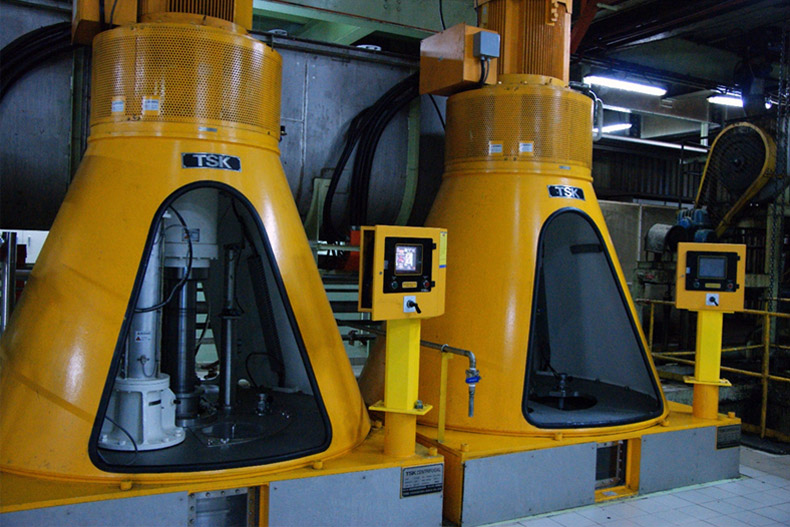
In the first step of refining operation, raw sugar crystals are mixed with raw syrup to soften and remove the crystal outer coatings of impurities. The crystals are then separated from the syrup and hosed with hot water in a centrifuge. This process is called “affination”. Soon after, the raw sugar will be mixed with hot water and the liquor produce is called “raw liquor”.
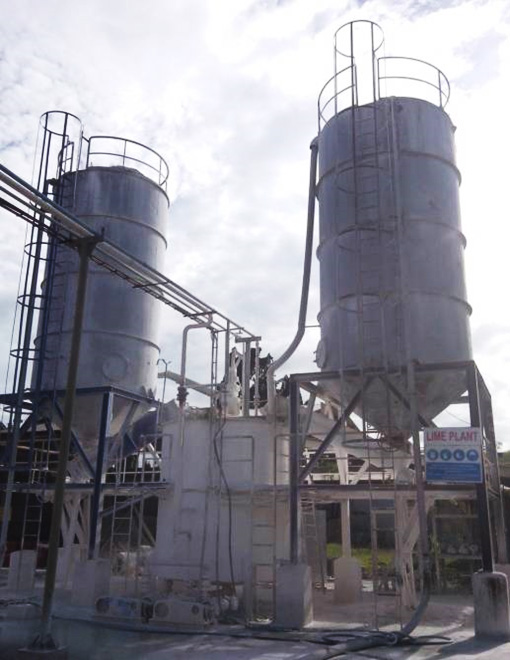
Next the raw liquor will be pumped into the F-6 tank. The function of the F-6 tank is to collect all raw liquor before entering the carbonator. Inside the F-6 tank, milk of lime will be added into raw liquor. Usually, milk of lime contains more than 95% hydrated lime Ca(OH)2 and less than 1%MgO. The milk of lime solution must be free from aluminium dioxide and sand. Lime is added into raw liquor in order for it to react with carbon dioxide inside the carbonator.
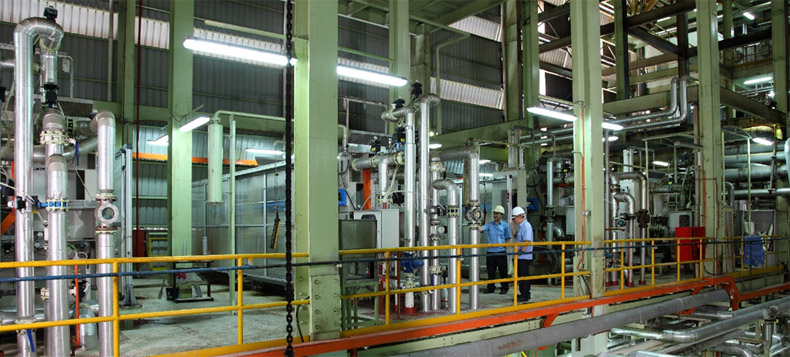
Carbonation is the process where carbon dioxide gas CO2 will be mixed with lime liquor inside the carbonator. The product from the reaction between limed liquor and carbon dioxide is Calcium Carbonate (CaCO3) and water (H2O). The formation of Calcium Carbonate will trapped all the impurities inside the liquor.
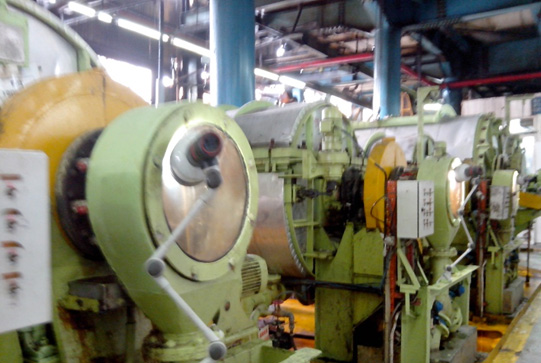
Rotary Auto Filter
Carbonated liquor will enter the rotary auto filter. The function of this rotary auto filter is to filter the content of Calcium Carbonate (CaCO3). Repetitive usage of the rotary filter forms a sludge. Water is used to wash this auto filter. The sludge will be pumped to the sludge tank to undergo filtration by using filter press.
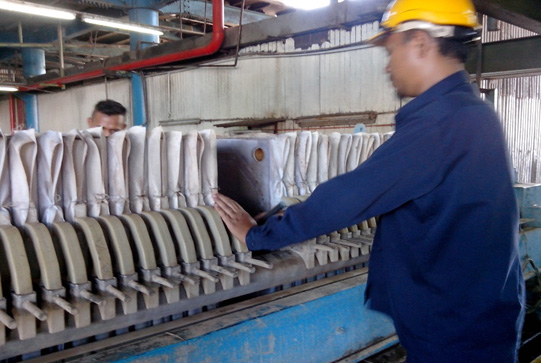
Filter Press
The function of the filter press is to filter the sludge during removal process. This allows the removal of sludge only and keeps the sweet water intact. The result produces clear liquor.

After clear liquor passes through the rotary auto filter, it enters the sulphur tower to undergo the sulphitation process. The function is to reduce the colour of clear liquor and to control the pH level. Similar to the carbonator process, this process distributes sulphur dioxide gas into the sulphitator which reacts with the liquor and is called “Sulphur Liquor”. This process also reacts with the impurities inside the sulphur liquor. Hence, a second filtration is needed to filter all the impurities.
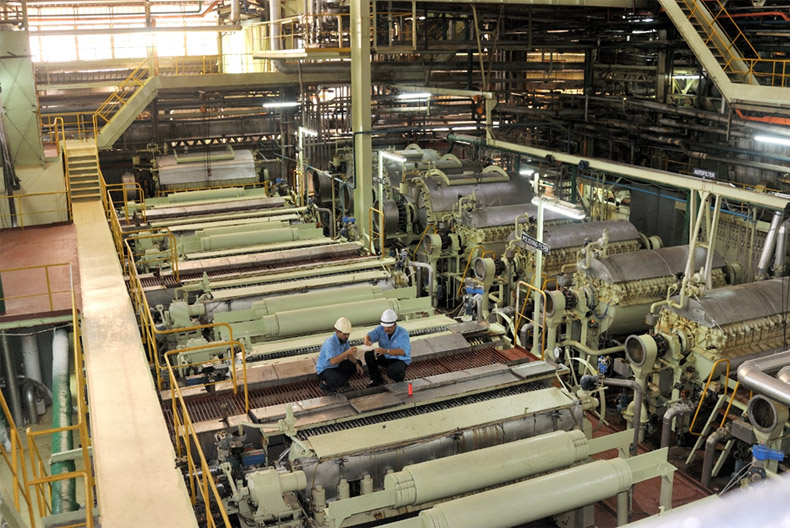
This rotary auto filter is the same with auto filter which was used in the first filtration process but bigger in size. After the second filtration is done, the liquor that comes out from rotary auto filter is called ‘Fine Liquor’.
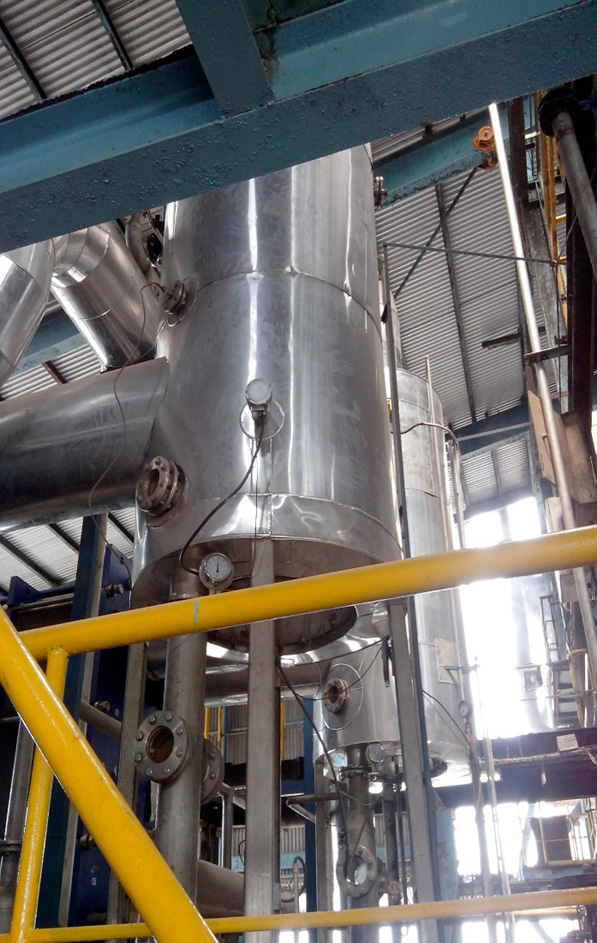
The fine liquor produced will be pumped to the double effect evaporator. This increases the brix of the liquor. It can be concluded that there are three main processes involved with the clarification station which are carbonation, filtration and evaporation which aim to monitor and control colour, brix, purity and pH of the fine liquor.
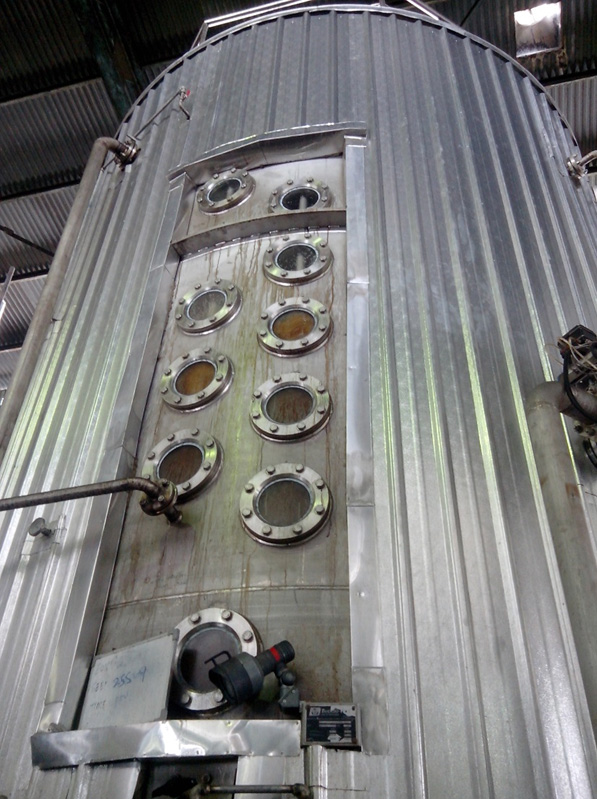
The concentrated fine liquor leaving the evaporators is subsequently boiled in a vessel known as a vacuum pan to form sugar crystals. Fine sugar crystals are used as “seed”. The crystals are grown to the required size by adding more liquor. When they are large enough, the mixture of sugar crystal and syrup is formed - called “massecuite” and is discharged from the pan.
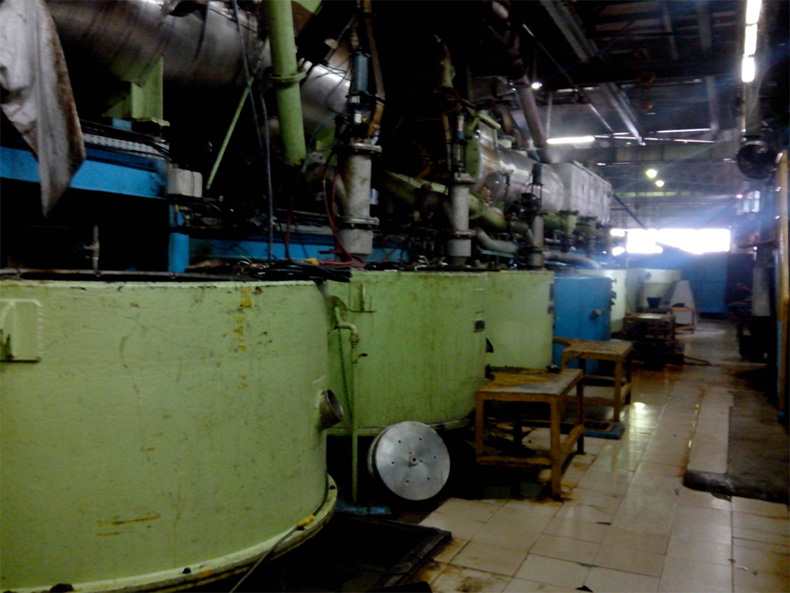
The massecuite undergoes separation into its component crystal and syrup constituents in a centrifuge machine. Centrifugal machine have a stirrer and it look like spinner. The function of the spinner is to spin the massecuite until the syrup is separated from its sugar. In the machine the crystals are hosed with hot water to enhance the separation effect.
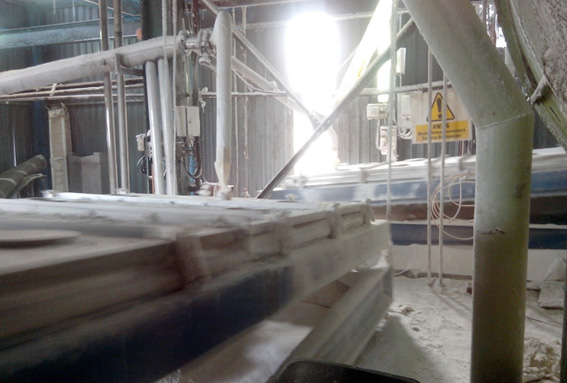
Rotex Sieve
To achieve the optimum size required for refined sugar is very important. Thus, the sugar has to undergo a screening process. The function of the screening station is to remove non-standard size of sugar by separating the sugar using two rotex sieves by aid with spring underneath. These rotex will vibrate to separate the unwanted sugar.
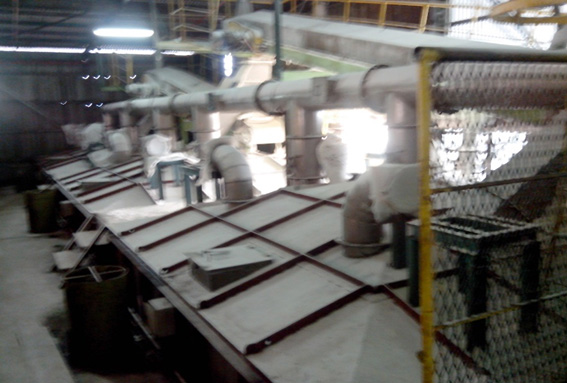
Storage Bins
The refined sugar crystals are then dried, cooled, sieved and stored in storage bins.
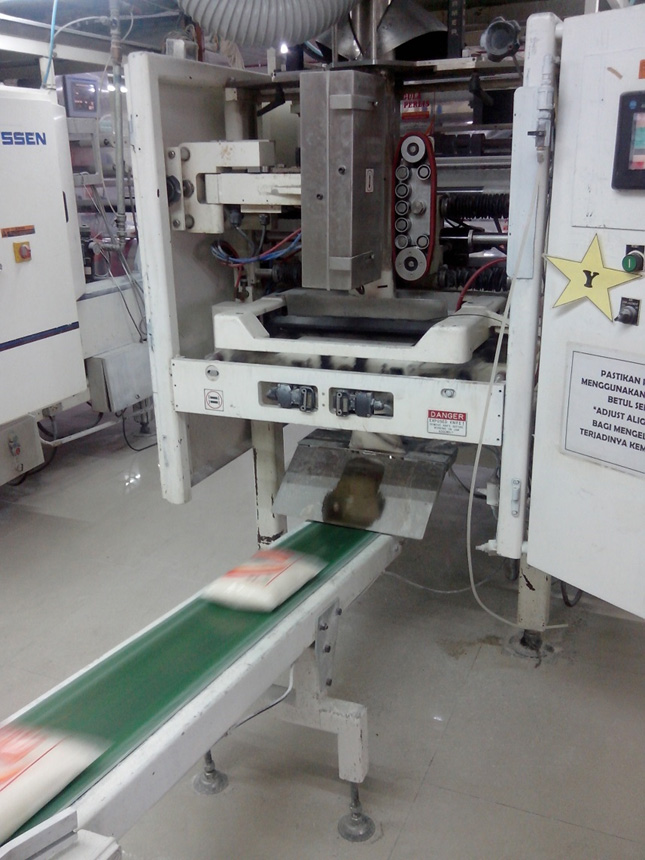
From the storage bins, sugar will be packed and labelled in this station. There are three types of sugar packaging which are 1kg, 50kg and 1 tonne. The process of weighing sugar is been done by using an auto weighing machine.




